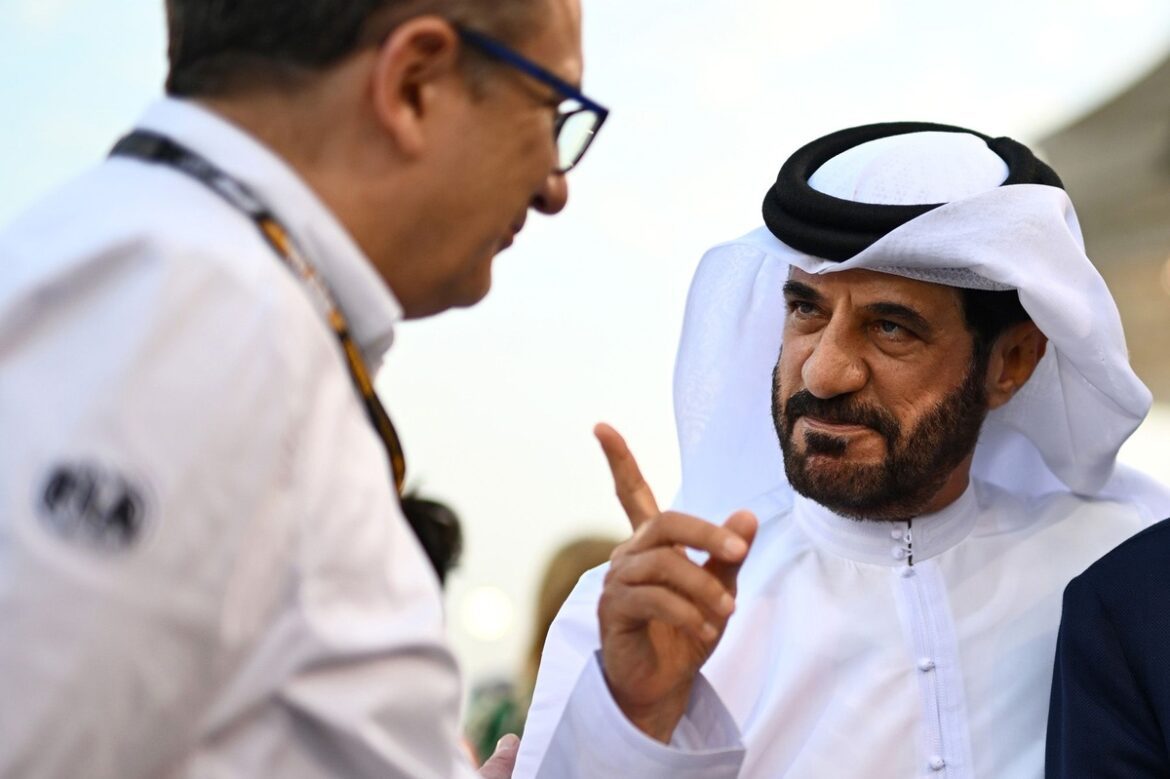FIA President Mohammed Ben Sulayem Advocates for V8 Engines in Formula 1
FIA President Mohammed Ben Sulayem has expressed strong support for transitioning Formula 1 to more affordable V8 engines as early as the 2029 season. During a recent discussion with journalists at the British Grand Prix at Silverstone, he emphasized the importance of cost-effective power units in the future of the sport. This move aims to provide a more sustainable and financially accessible framework for teams while maintaining the excitement and competitiveness of Formula 1.
The Shift to V8 Engines
Ben Sulayem’s assertion that a shift to V8 engines is on the horizon reflects a growing consensus within the sport. He stated, "To us, the V8 is happening." His optimism is buoyed by the support from Formula One Management (FOM) and the acknowledgment from teams that this change could be beneficial for the series. The call for a more economical engine formula has been echoed throughout the season, culminating in discussions with current and prospective power unit manufacturers in Bahrain.
One of the main drivers behind this push for V8 engines is the exorbitant costs associated with the current power units. The complexity of modern engines has led to research and development expenses soaring to around $200 million. In contrast, the price tag for an existing engine ranges between $1.8 million and $2.1 million. By adopting a simpler V8 engine design, the FIA aims to significantly reduce these costs, potentially making the sport more accessible for teams and manufacturers.
The Importance of Cost Reduction
Ben Sulayem highlighted the urgent need for cost reduction in Formula 1, particularly concerning the high prices of fuel and transmissions. As he noted, "The fuel is also very expensive, and we have to be very careful with that. Transmissions are very expensive." The current engine design is not only costly but also complicated, making it a barrier for new teams wishing to enter the sport. Simplifying the engine design could pave the way for more teams to join the grid, enhancing competition and excitement.
Future Power Units and Electrification
While the discussion around V8 engines is gaining traction, Ben Sulayem also emphasized the necessity of maintaining a level of electrification in future engine regulations. The recent meeting in Bahrain concluded that while moving to a V8 engine design could be beneficial, it is crucial to integrate sustainable fuels and some form of hybrid technology. The exact specifications for these future power units are still under consideration, and discussions will continue among the FIA, FOM, and manufacturers to ensure that the new regulations align with the sport’s goals for sustainability and performance.
The Possible Inclusion of a 12th Team
In addition to advocating for more economical engines, Ben Sulayem addressed the potential for a 12th team to join the Formula 1 grid. Following efforts to welcome a U.S. OEM, specifically Cadillac, in 2026, attention is now shifting towards potential participation from Chinese manufacturers. However, Ben Sulayem clarified that there is currently no formal bid from any Chinese entity.
He stated, "The time will come when we feel it is right to open an expression of interest." This highlights the FIA’s cautious approach to expanding the grid, ensuring that any new team must go through rigorous FIA and FOM procedures. The key focus remains on ensuring that any new entrant adds significant value to the sport and does not disrupt the existing competitive landscape.
The Future of Formula 1 Engines
The transition to a V8 engine formula represents a significant shift in the direction of Formula 1. With many manufacturers already producing V8 engines for their road cars, the commercial viability of this move is promising. Ben Sulayem noted that the target is to achieve over a 50 percent reduction in costs associated with engine production and operation.
The sport is at a crossroads, balancing the need for innovation and sustainability with the imperative to keep costs manageable for teams. The discussions on future power units will be critical in shaping the next era of Formula 1, ensuring that it remains a premier motorsport series while adapting to the changing landscape of automotive technology.
Conclusion
In summary, Mohammed Ben Sulayem’s advocacy for V8 engines and his vision for the future of Formula 1 highlight the ongoing evolution of the sport. By focusing on cost reduction, sustainability, and potential new teams, the FIA is laying the groundwork for a more accessible and competitive environment in the years to come. The combination of these efforts could redefine the Formula 1 experience, making it not only a showcase of engineering excellence but also a platform for innovation and growth in the motorsport industry.
